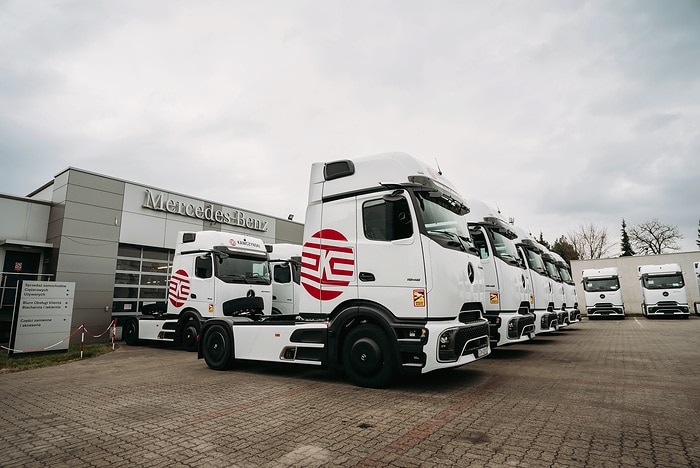LNG Canada, the massive liquefied natural gas facility at Kitimat, British Columbia, is on the verge of ramping into full operation. Its commissioning marks a pivotal moment for Canada’s energy and climate policy. Promoted as a cleaner alternative to coal and a model of low-emissions LNG infrastructure, the project is also emblematic of a global trend: locking in decades of fossil fuel infrastructure at a time when net-zero ambitions demand urgent emissions reductions.
In a previous analysis of Woodside’s North West Shelf extension in Australia, I laid out the energy inefficiencies and emissions flows embedded in a modern LNG supply chain. With LNG Canada now entering full production, it’s time to apply that same lens to a Canadian project built with greater efficiency in mind but still burdened by the structural realities of long-distance gas delivery.
LNG Canada is a joint venture led by Shell, with partners including Petronas, Mitsubishi, PetroChina, and KOGAS. The first phase of the project is designed to export 14 million tons of LNG annually, fed by approximately 2 billion cubic feet per day of natural gas extracted from British Columbia’s Montney Formation. The Coastal GasLink pipeline delivers this gas over 670 kilometers to the Kitimat site, where it is liquefied and loaded onto LNG carriers bound primarily for Asian markets.
The project’s engineering does incorporate design elements to reduce emissions. A portion of the liquefaction energy demand is met by BC Hydro’s grid, powered by hydroelectricity. High-efficiency aeroderivative gas turbines further improve the energy profile compared to legacy facilities. The LNG carriers are expected to complete shorter Pacific crossings to Japan, South Korea, and China than vessels departing from the US Gulf Coast, cutting transit times and emissions.

Even with these advantages, the total energy and emissions footprints are significant. From extraction to combustion at the point of electricity generation, LNG Canada’s product follows the same thermodynamic constraints that govern all LNG chains.
A full-chain Sankey shows 853 petajoules of energy entering the pipeline from the wellhead. Of that, 42.7 petajoules are lost during transmission and compression. At the LNG plant, 56.7 petajoules are consumed, mostly through fuel gas for liquefaction, leaving 753.6 petajoules to be loaded onto ships. Marine transport results in the loss of another 15.1 petajoules. The regasification process at destination terminals consumes an additional 7.4 petajoules.
The remaining 731.1 petajoules are delivered to power plants, where the final and most significant losses occur. Assuming half the gas is burned in high-efficiency combined-cycle gas turbines and the other half in lower-efficiency peaker turbines, only 40% of the energy makes it to the electricity grid. That leaves 438.7 petajoules as rejected heat and just 292.4 petajoules as delivered electrical energy. In total, around 66% of the initial energy content is lost across the supply chain.

Alongside these energy losses are greenhouse gas emissions at every step. At the wellhead, roughly 1.5 million tons of CO2 are emitted annually from combustion during drilling, separation, and field operations. Methane leakage in the upstream phase, despite ongoing regulatory efforts to reduce it, is estimated at around 2.0 million tons CO2e per year. Pipeline operations add another 0.6 million tons of CO2 and 0.4 million tons CO2e from methane leaks. The liquefaction facility, while relatively efficient, still emits 2.0 million tons of CO2 annually and a small but measurable 0.1 million tons of methane CO2e from flaring, venting, and equipment leaks. Ship transport adds another 1.0 million tons of CO2 and 0.1 million tons CO2e in methane slip from ship engines. Regasification terminals contribute 0.3 million tons of CO2, with methane leakage approaching zero under normal operation.
The largest emissions occur at the point of use: gas-fired power plants consuming the regasified product emit an estimated 37.8 million tons of CO2 per year, plus another 0.2 million tons of CO2e from unburned methane in exhaust or minor leakage.
This figure rivals the emissions from entire sectors of the Canadian economy. British Columbia’s total greenhouse gas emissions in 2021 were about 61 million tons, meaning LNG Canada alone would account for nearly three-quarters of the province’s current emissions profile. Nationally, Canada’s entire transportation sector emitted roughly 159 million tons of CO₂e in 2021, while the oil and gas sector emitted about 179 million tons. LNG Canada’s output would represent nearly 30% of either sector on its own. Framed this way, a single export-oriented facility intended to serve foreign power grids would add a carbon footprint comparable to Canada’s largest industrial categories.
Taken together, the annual greenhouse gas emissions across the LNG Canada supply chain total approximately 46 million tons of CO2e. This includes both CO2 from combustion and CH4 from fugitive emissions, converted to CO2e using a 100-year global warming potential. While LNG Canada’s liquefaction plant is among the most efficient globally, the scale of its operations ensures a substantial contribution to atmospheric carbon. Over a projected 40-year operational lifespan, this supply chain would emit about 1,800 million tons of CO2e. If the facility operates for 50 years, that climbs to approximately 2,250 million tons. These are conservative estimates, not including potential expansions or additional trains.
Supporters of LNG Canada argue that displacing coal in Asia with Canadian LNG can yield net climate benefits. This is plausible in jurisdictions still reliant on coal-fired generation, where modern gas turbines can cut emissions per megawatt-hour by 50 to 60% if methane leakage is well managed. However, the substitution effect is not guaranteed, especially in markets where renewables are now outcompeting both coal and gas on cost. Moreover, power sector decarbonization trajectories in countries like Japan and South Korea increasingly involve renewables, storage, and grid integration rather than long-term gas dependence. LNG Canada’s long-term contracts, many signed for 13 to 15 years, indicate that buyers view the product as a strategic hedge.
When compared to Australia’s decision to extend the Woodside North West Shelf LNG facility to 2070, the parallels are clear. Both projects represent long-term commitments to fossil fuel infrastructure with emissions footprints comparable to major national sectors. British Columbia’s own emissions target is undercut by LNG Canada’s presence. At full capacity, the facility will be the single largest point source of emissions in the province, contributing significantly to BC’s 2030 and 2040 carbon budgets even if the emissions of ships, gasification and electrical generation are ignored. Despite partial electrification and process efficiency, the sheer volume of gas processed and combusted ensures that the project’s climate impact remains high.
The silver lining is that with both India and China having reduced both coal and gas generation this year, the likelihood of any more contracts after the 13-15 year mark are diminishing rapidly. The pipeline and Kitimat are more likely to be stranded assets with decomissioning costs taken from the public purse, just like the Trans Mountain Pipeline. I suspect I should look closely at the economics of the beast next, to see if Canadians are subsidizing LNG exports as heavily as they are subsidizing Alberta’s crude exports. As I noted recently, they are seeing about $3 billion a year in unpaid pipeline costs that Canada’s taxpayers are covering.
Energy efficiency helps, but scale matters more. LNG Canada is proof that even best-in-class LNG operations embed hundreds of millions of tons of emissions into the global system over their lifetime. Framing the project as a cleaner bridge fuel obscures the central reality: it is a massive industrial complex dedicated to extracting, liquefying, and exporting fossil fuels for combustion. While cleaner than coal, it is not clean. Its existence will shape emissions trajectories and policy debates for decades.

Sign up for CleanTechnica’s Weekly Substack for Zach and Scott’s in-depth analyses and high level summaries, sign up for our daily newsletter, and follow us on Google News!
Whether you have solar power or not, please complete our latest solar power survey.
Have a tip for CleanTechnica? Want to advertise? Want to suggest a guest for our CleanTech Talk podcast? Contact us here.
Sign up for our daily newsletter for 15 new cleantech stories a day. Or sign up for our weekly one on top stories of the week if daily is too frequent.
CleanTechnica uses affiliate links. See our policy here.
CleanTechnica’s Comment Policy




